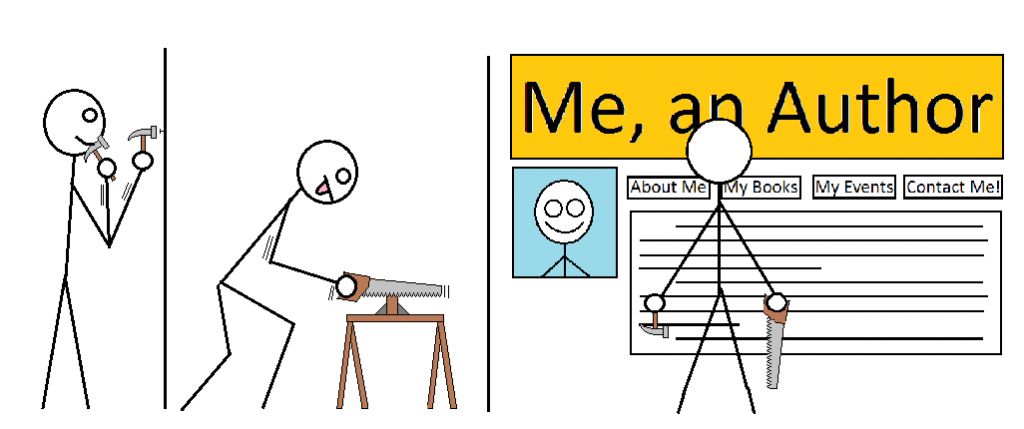You’ve heard authors need websites, but you don’t know how to create one. Read on, and learn.
First, it’s not true that you need a website. You do need an online presence that shows you to be an author. That can consist of accounts on Facebook, Google+, Twitter, etc. However, I’d guess most authors have their own website.
 A website does at least the following things for you:
A website does at least the following things for you:
- Tells readers who you are and what you’ve written
- Tells readers where they can get your books
- Tells potential publishers and editors that you’re a serious professional
- Provides interesting, even exciting, content linking what you’re selling to what readers want
I’ll presume you know, or can easily find out, the mechanics of setting up a generic website. There are a variety of hosting services out there and they have video tutorials and instructional blog posts on how to do that. I’m focusing on making an author website, as distinguished from other types of sites.
First, think about grabbing interest. Think like a newspaper cartoonist. One such cartoonist wrote that people view a political cartoon for about three to five seconds. That’s it. Readers buy the newspaper for the articles, so they’re prepared to read a few of them, if the headlines attract. But the cartoonist must seize attention in just a few seconds.
The same goes for your website. Your potential readers are surfing the web for free, so they only linger on a site if it grabs them right away. You only get a moment to show them enough about you for them to stay awhile and explore your site.
That means you don’t want long blocks of text. Also, break up your text with appealing, welcoming images. The images and text you choose on your home page may be giving the first impression visitors have of you. At a glance, they should get a good idea of the type of books you write, and some notion of the type of person you are.
Set up your site to appeal to your potential readers. Use words and images selected to attract them. Your site then becomes a suddenly impactful ‘story’ of you and your books.
Unless you have a good reason not to, you should include a picture of yourself. Although it shouldn’t matter, readers like to see what their authors look like. (Yes, I know, I don’t have my own pic on my website, except for a couple of blog entries here and here.)
Assuming the visitors to your site now have their curiosity piqued, your website should also tell them where they can buy your books and where you may be appearing so they can meet you.
A blog can draw visitors to your site, especially once you have a number of blog posts under your belt. Internet searches for your blog post topics can guide surfers to your site.
If you decide to blog, know this—it will eat into your fiction writing time. Before you start blogging, I recommend you write down twenty topics or so. Not the whole post, just the topic. Commit to posting on a regular periodicity and stick to it. It can be daily, weekly, every other week, etc., but you should adhere to the schedule. As new ideas for future blog post topics occur to you, add them to the bottom of your topic list.
For other ideas about building your author website, check out the websites of your favorite authors, and others. Also look at other blog posts on the topic, such as this one, by Thomas Umstattd.
Once you launch your website, be sure to tell the world that you learned how to do it from—
Poseidon’s Scribe

